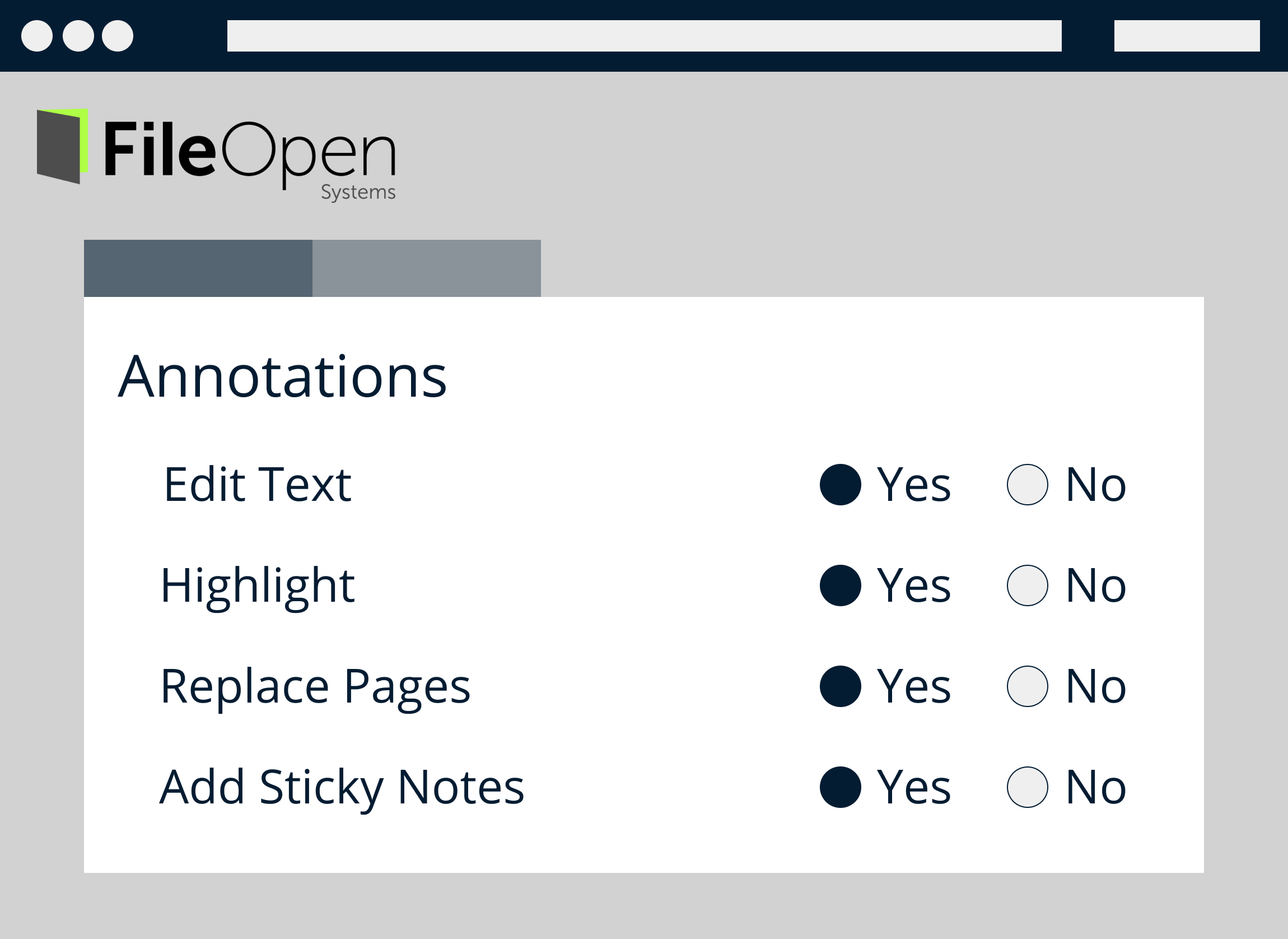FileOpen Annotations
Enable secure annotations on protected documents
Share documents for review without compromising security
Annotation is a core feature of the PDF design, with a standardized set of annotation types expressed in a file format (XFDF) that is defined in a specification of its own (ISO 19444-1). These annotations are stored on a separate layer above the page content, like sticky-notes placed onto a sheet of paper, so can be detached and shared independently of the PDF itself. Permission to add/modify annotations is expressed separately from other permissions, e.g. to extract text or to modify page contents, so it is possible to have a PDF that is read-only with respect to its content, i.e. the text/graphics cannot be modified, but can still be annotated.

Make some annotations private
In most cases, the annotations made to a PDF are stored within that PDF. This is useful in that it encapsulates the annotation content and allows the marked-up document to be shared in the normal ways - as an email attachment, or via file sharing services. But this type of sharing doesn't work in cases where two or more people want to collaborate on the PDF in real-time, or in cases where the PDF is being delivered from a server to multiple users who each want to add their own annotations without necessarily sharing them with others.
Control who can see annotations
Also, the PDF/XFDF specification does not include a mechanism for selective sharing of annotations. An annotation can have an author and certain visual markers (color, icon, etc.), but there isn't a mechanism for allowing an annotation to be visible to some users but not others, or editable by some users and read-only to others. So for secure-document workflows it is advantageous to also have a secure method for adding and sharing annotations. FileOpen's server-side technologies enable exactly this kind of control.

